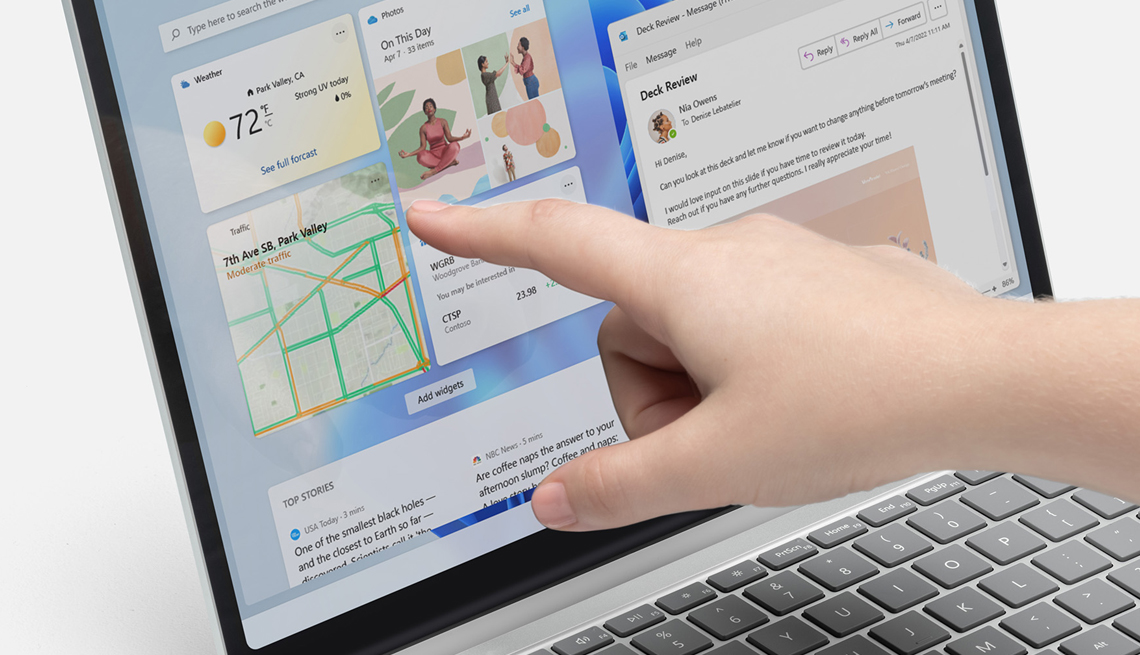
- Select a language for the TTS:
- UK English Female
- UK English Male
- US English Female
- US English Male
- Australian Female
- Australian Male
- Language selected: (auto detect) - EN
Play all audios:
Why? SSDs are like the flash memory in your smartphone or iPad — smaller, lighter and faster than a hard drive, but with no moving parts. Hard drives spin. So solid state drives are less
prone to damage and much easier on a battery. SSDs do have a downside: less storage, on average, than a hard disk. A laptop may have 256 gigabytes of SSD storage compared to 1 terabyte,
roughly 1,000 gigabytes, available with a hard disk. But storage doesn’t matter as much today as it once did. Streaming services such as Netflix for movies and TV shows and Spotify for music
don’t require you to download files, and free cloud services can hold files for you offsite via a password-protected website or app such as Dropbox, Google Drive, iCloud or OneDrive. That
also means you can worry less about backing up files. 3. USB-C OR THUNDERBOLT PORTS Those ubiquitous USB slots on the side or back of a laptop are ideal for adding devices such as an
external hard drive, flash drive, larger keyboard, mouse or smartphone. But the thinner these computers get, the less likely you’ll find USB-A ports. Instead, you’ll see smaller USB-C ports
that offer a whole new world of functionality. These ports carry data and power over a single wire; therefore, your smartphone can charge while synchronizing information between the two
devices. USB-C cables also can transmit video to an external monitor or projector. For accessing data, USB-C ports are typically faster than USB-A. If you run low on power, many USB-C
laptops can be charged with a battery pack or power brick, just like your smartphone. Even better: USB-C cables are reversible, which means you never have to worry about plugging them in
upside down. If most of your external devices still have USB-A cables, you might benefit from a hub that lets you plug several peripherals into one USB-C port. Some higher-end laptops,
including MacBooks, have Thunderbolt 3 ports, which use the same USB-C connector and are fully compatible with USB-C devices. Getty Images 4. HD WEBCAMS AND WI-FI 6 Who knew video calling
would become the de facto means of communication? Leave it to a pandemic to force billions around the world to work or learn from home. In 2022 in the U.S., 58 percent of the workforce,
about 92 million people, are able to work remotely at least one day a week, according to a McKinsey & Co./Ipsos survey. For that reason, you should consider a laptop with a stellar web
camera, webcam for short. Oh sure, you can always pick up an external camera to plug into your computer, but why incur the extra cost and use up a valuable USB slot? Look for a
high-definition (HD) webcam, such as the 1080-pixel webcam on the HP Spectre x360 16 laptop or the 1080p FaceTime HD camera built into the 14- and 16-inch MacBook Pros.



